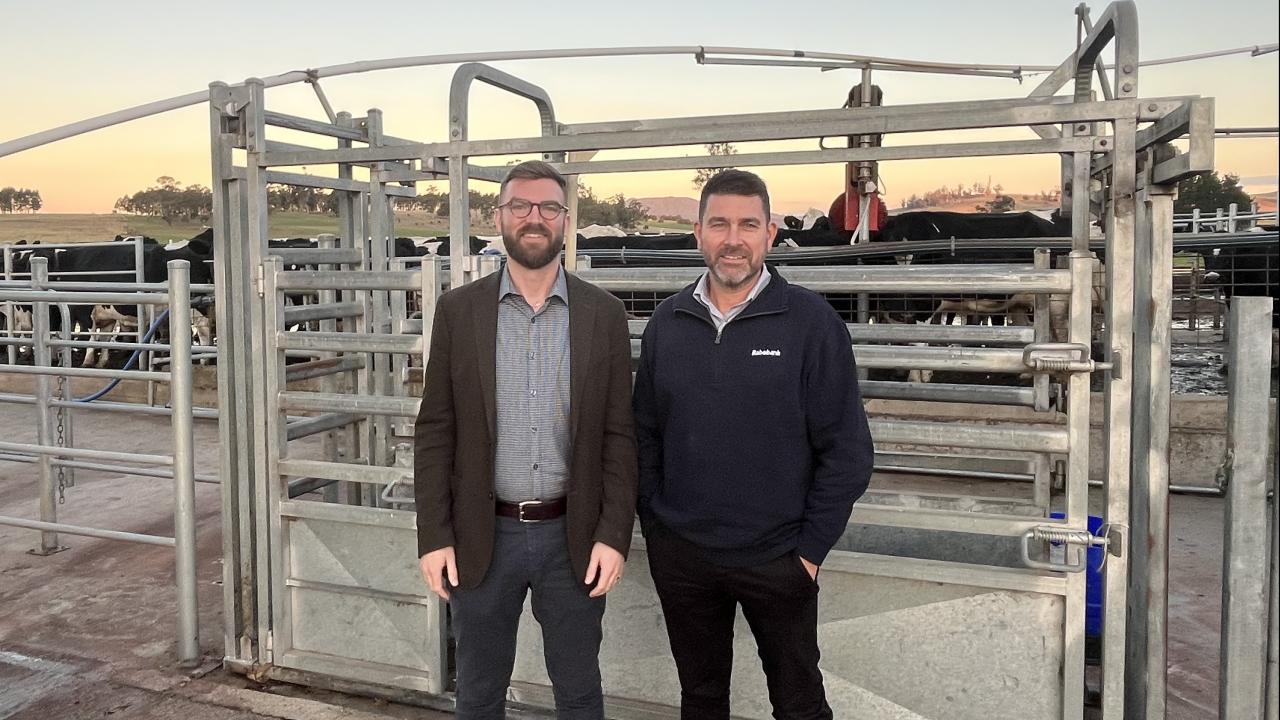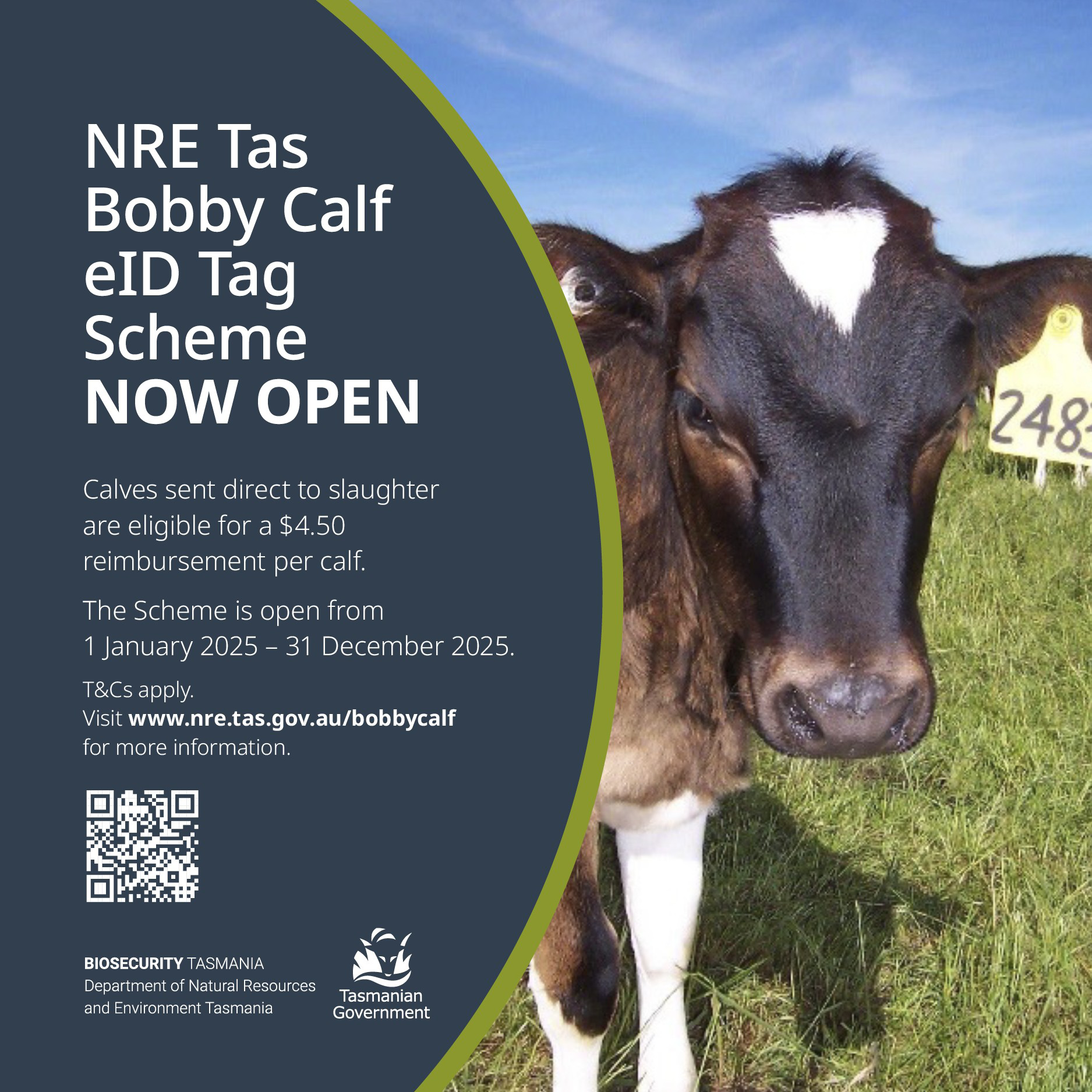USA dairy growth as it competes on the global market with Australia

Rabobank’s US-based senior dairy analyst Lucas Fuess made no bones about the fact that the US will be competing more strongly against Australia and the “big seven” dairy regions in the world on the global market when it comes to cheese and powdered milk products when he spoke to Tasmanian dairy farmers this week.
Mr Fuess spoke at a networking event at Ashgrove Cheese at Elizabeth Town on Tuesday evening and then headed to Bridport on Wednesday morning with Rabobank’s Melbourne-based senior dairy analyst Michael Harvey to meet more dairy farmers to talk about the US dairy boom, cheese investment and tackling tariffs.
Mr Fuess said that his visit was a great opportunity to do “a bit of information exchange”.
“Spending the week with clients in Australia is a chance to study prices, forecasting, different trends and make sure farmers are as well prepared as possible to run their businesses successfully,” he said.
America is set to produce an estimated extra 900 million pounds, or 410,000 tonnes of cheese per year - more than the 400,000 tonnes than Australia produces in total.
According to Mr Feuss investment in dairy production worldwide is trending upwards and dairy farmers in Tasmania are keen to understand what they will be dealing with in the future.
He said the increased availability of cheese and whey products being exported from the US could affect global prices, and comes on top of US president Donald Trump’s introduction in April of a 10 percent baseline tariff on trading partners across the globe.
According to Rabobank experts, increased domestic production in the US will counterbalance an expected drop in imports and Australia, like Europe, is likely to shift its focus to emerging markets in East Asia and the Middle East.
Despite the seemingly limited overall effect there could be a significant challenge for companies with substantial investments in the US market.
“The US has been growing its export markets for a long time now and it’s a key part of our dairy industry so it’s important to look at how in the US and in Australia all the pieces click together in terms of fulfilling growing dairy demand on a global basis,” Mr Feuss said.
“Australia as a country with sizable milk production and a country that has influence on exports going to many parts of the world so I’m here to learn as much as I can from our clients as well as educate about America’s milk production growth.
“When it comes to tariffs, there’s always some level of volatility on commodities and we need to make sure we’re managing that as much as we can, things are constantly evolving such as the reduction of tariffs on China that Trump announced this week.”
Mr Fuess said that billions of dollars are being invested in dairy processing in America.
“America needs more processing plants as we increase our global competitiveness and meet a rising demand for dairy products,” he said.
“It’s already been a record year for US cheese exports, and with almost a billion pounds of cheese being produced per year and more coming online there will be a spillover effect into global markets and that’s something that Australia and New Zealand will be exposed to so farmers need to keep an eye on the outlook.
“The trade situation and tariff situation is continuing to evolve and it’s definitely one to stay on top of and at the end of and day make sure we’re managing as best as possible.”
He also added that the smaller milk and cheese producers, like King Island Dairy, had nothing to fear from the big players on the global market.
“At the end of the day the consumer is in charge of the products they consume, and they will always be willing to pay more for certain products that excel in a nice market.”
Me Feuss also talked about the US trend of breeding beef/dairy cross cattle so that farmers can spread their risk depending on which market is performing better.
“The problem is these crosses will not enter the dairy value chain but go to the beef chain, which means there’s a lack of replacement animals in the dairy industry and what is available is very expensive.
“It’s leading to a limited ability for farmers to expand their herd and that’s a phenomenon that can’t be solved quickly."




Add new comment
Comments
Competing with quality needs fresh institutional thinking.
In a competitive global market selling genuine Quality is the key.
Much of Australia's so called competiveness was predicated on grain supplemented dairy, that we now know produces and unhealthy fatty acid profile for humans. Coupled to that an agriculture dependent on incorporating biocides into the foodchain, and that destroy the soil biome.
Tasmania is uniquely placed to address these issues, if our institutions are capable of understanding the critical role of integrity, in quality products; something that Ashgrove understand well. Can the our institutions?
Regenerative organic development of the industry, our soils our hydrosphere, all depend on them stepping up to the issue of integrity.